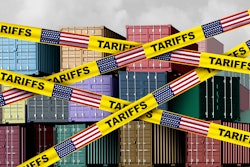
Tariff uncertainty is becoming more of a supply chain disruption than the COVID-19 pandemic, according to new Supplyframe Commodity IQ intelligence.
“Today’s lead time surge shows the market impact of the trade wars is happening faster, within a shorter duration, and with greater intensity than what we experienced during the pandemic,” says Supplyframe CEO and founder Steve Flagg. “Companies have tried to minimize their tariff exposure the best they can by placing forward orders and struggling to diversify away from China. But these approaches will soon reach their limits. Once businesses consume their forward inventory, there’s limited buffer from reduced product availability and higher prices.”
Key takeaways:
· This year saw the highest-ever reading in the history of the Commodity IQ Lead Time Index, which in April, reached a score of 166.6, well above the baseline of 100. This recent spike in lead times is even more severe than the increase seen late in 2020, nine months after COVID-19 was officially declared a pandemic. That trend continued throughout 2021 and 2022, when the Commodity IQ Lead Time Index hit 146.7 in January of 2022, its previous record high. And now the index is projecting that lead times from March to June will rise 75%.
· In terms of sequential percentage changes, the Supplyframe Commodity IQ Lead Time Index revealed an 80% increase in December 2019. This was an early warning sign of the pandemic-era parts shortages that would soon arise. The Commodity IQ Lead Time Index score increase of 85% from March to April is larger, suggesting that lead time disruptions in 2025 could be more intense than the initial lead time impacts businesses experienced in 2019.
· Many lead time increases are a result of rising demand in Q2 2025, as businesses load up on key electronic commodities in an attempt to avoid potential shortages in the coming months. At the same time, many businesses continue to invest in AI services, which rely on complex data center configurations requiring specialized hardware and systems to handle massive data processing, accelerated computing, and efficient power and cooling management for AI applications.
· History shows that low inventory can lead to higher prices. Five months after the Commodity IQ Inventory Index hit prior lows in May, June, and July of 2021, there were increases in the Commodity IQ Price Index, which saw a 6.5% rise in Q4 2021 and a 14.1% jump in Q1 2022.
· This level of price hikes hasn’t yet taken hold across electronics components in the current tariff environment. But the Price Index is already showing price increases for microcontrollers and microprocessors, which are set to rise 14% sequentially in Q2 of 2025, and Supplyframe’s preliminary forecast for July indicates the potential for a 6% increase for next month.


















